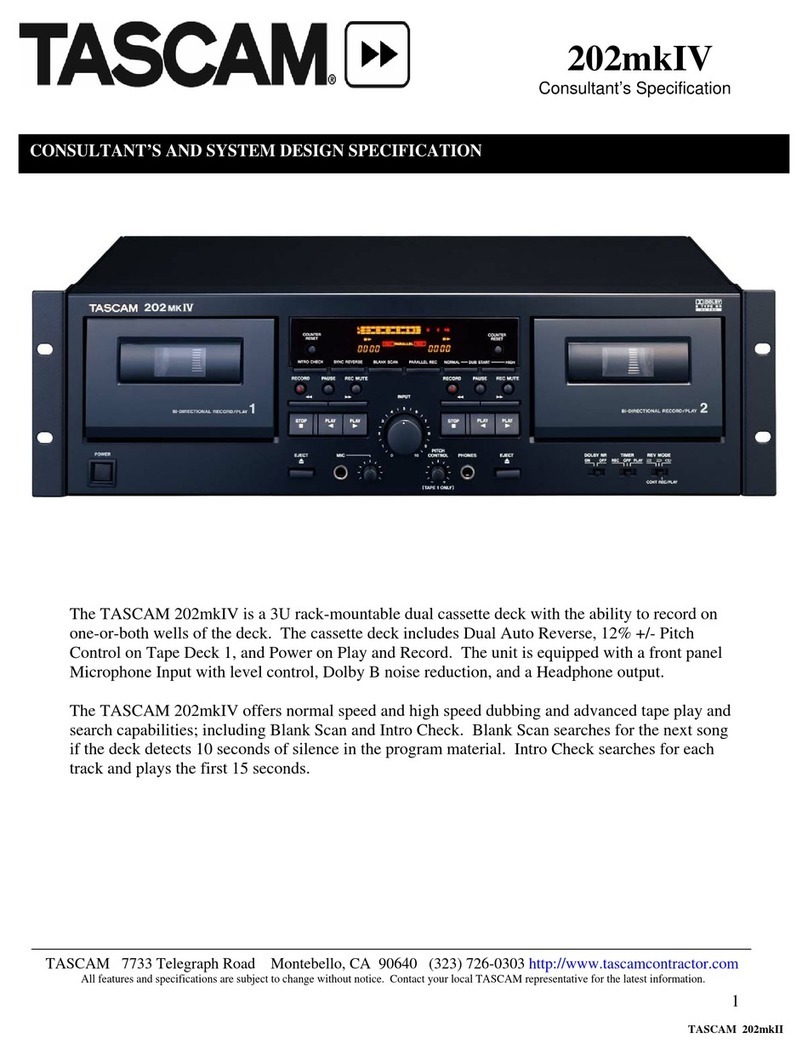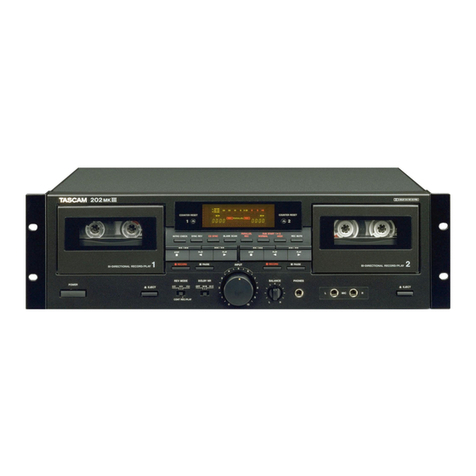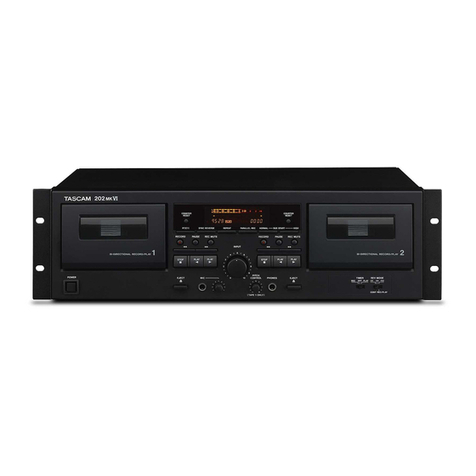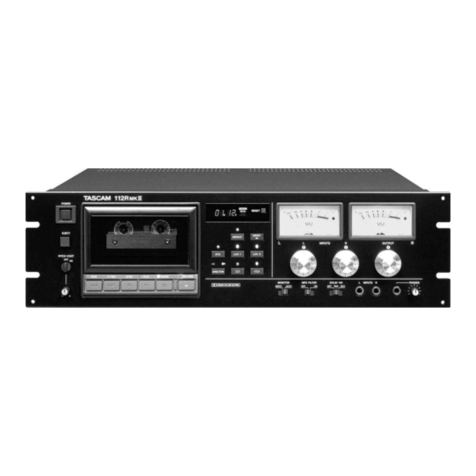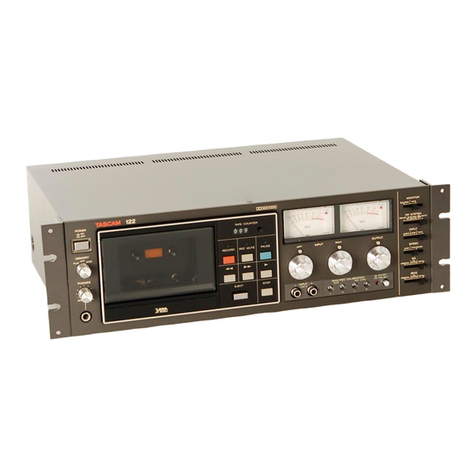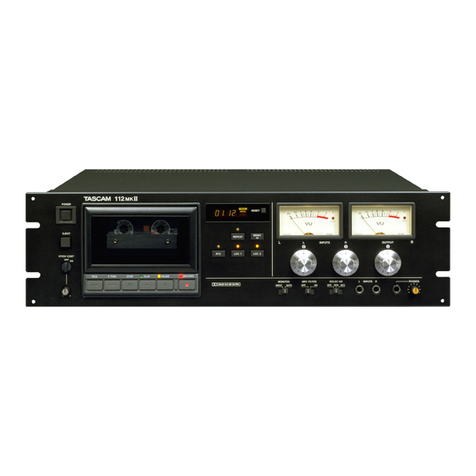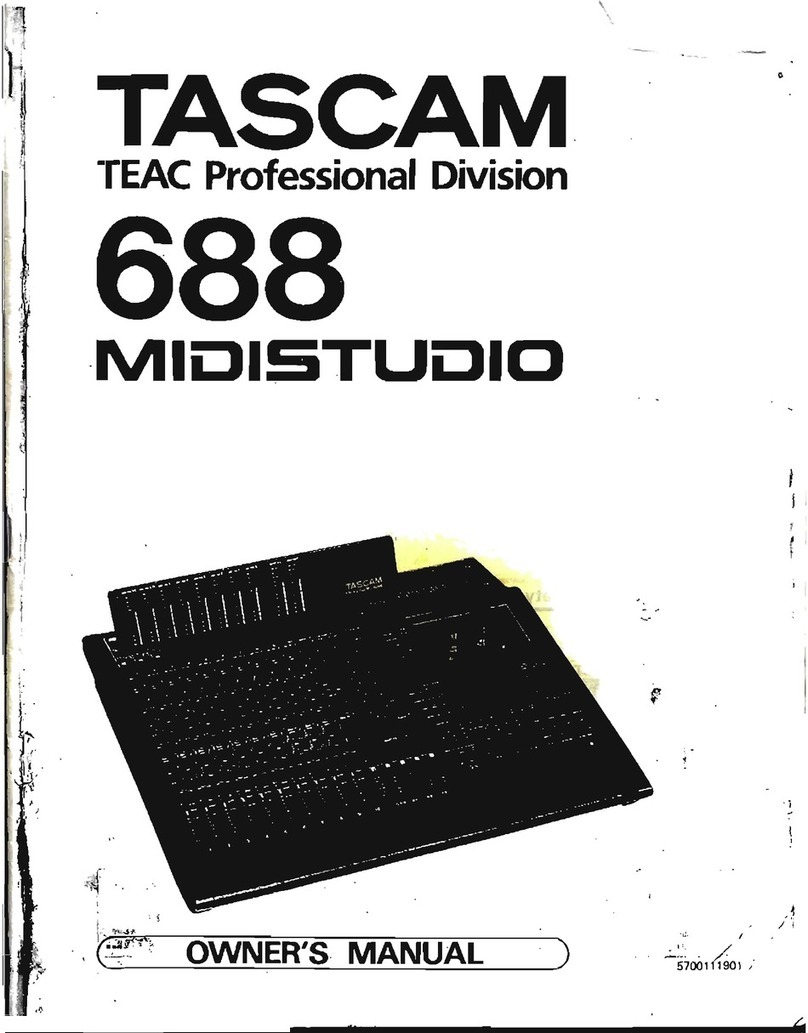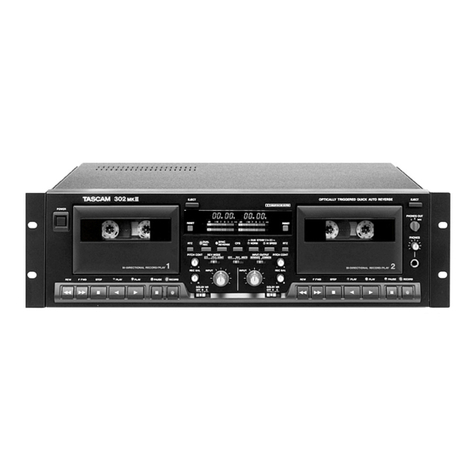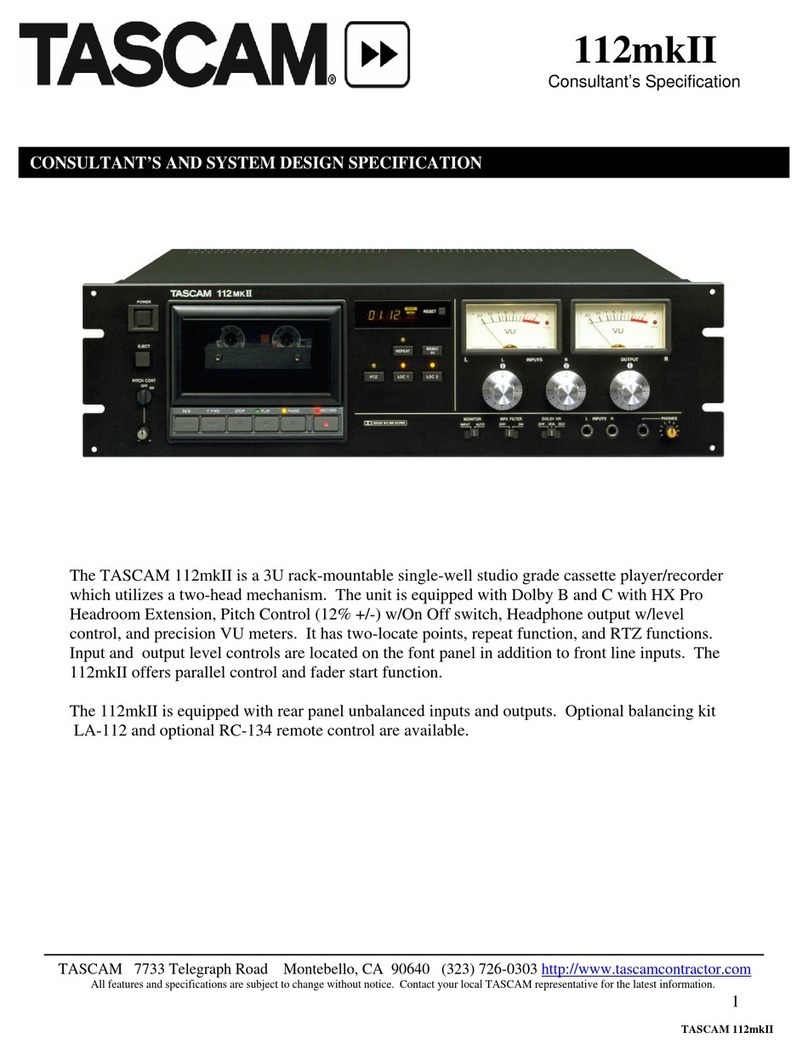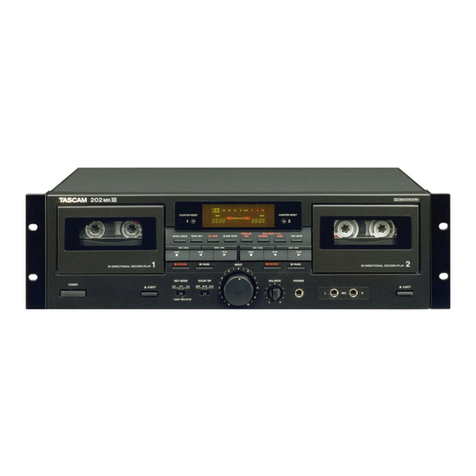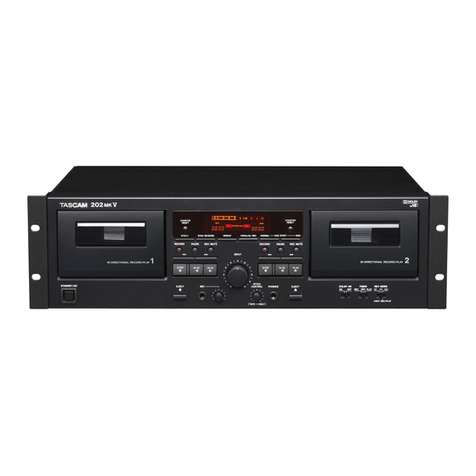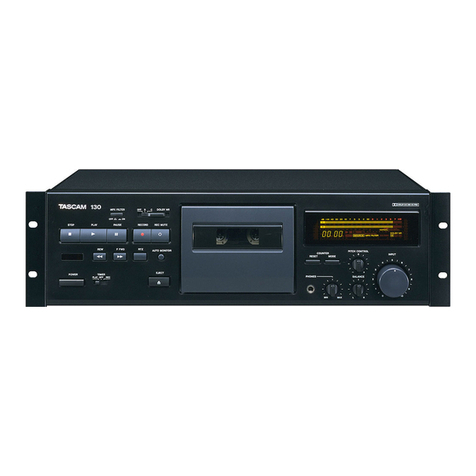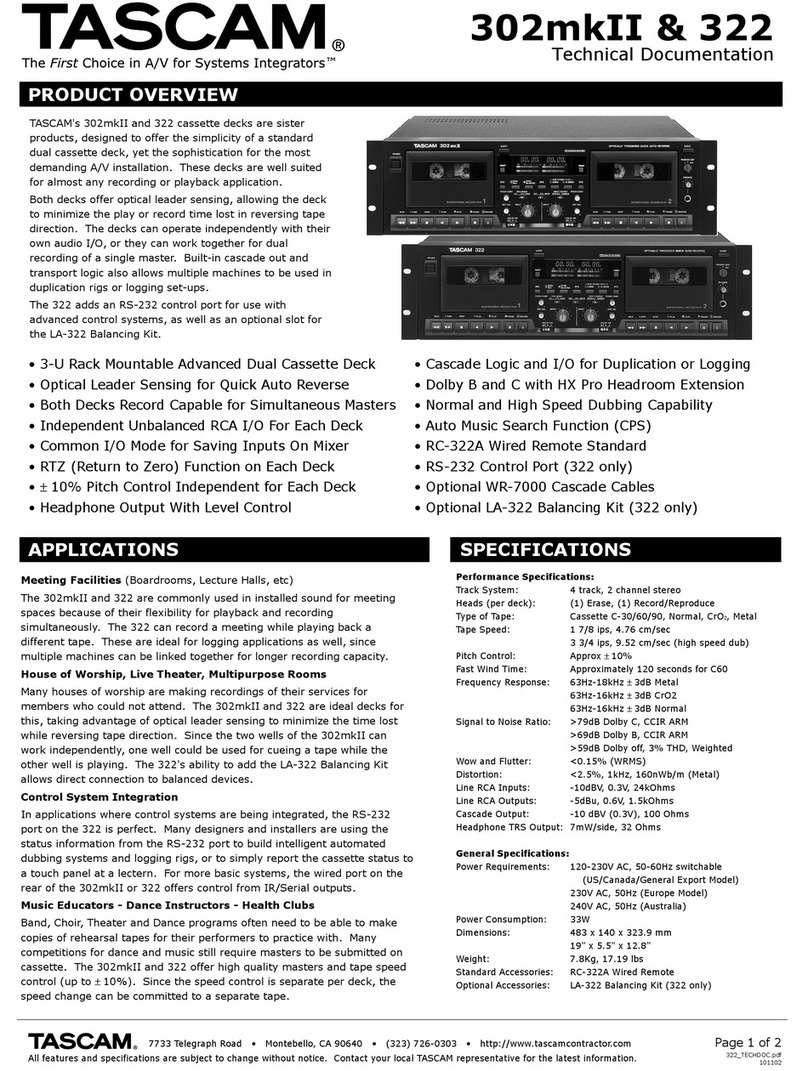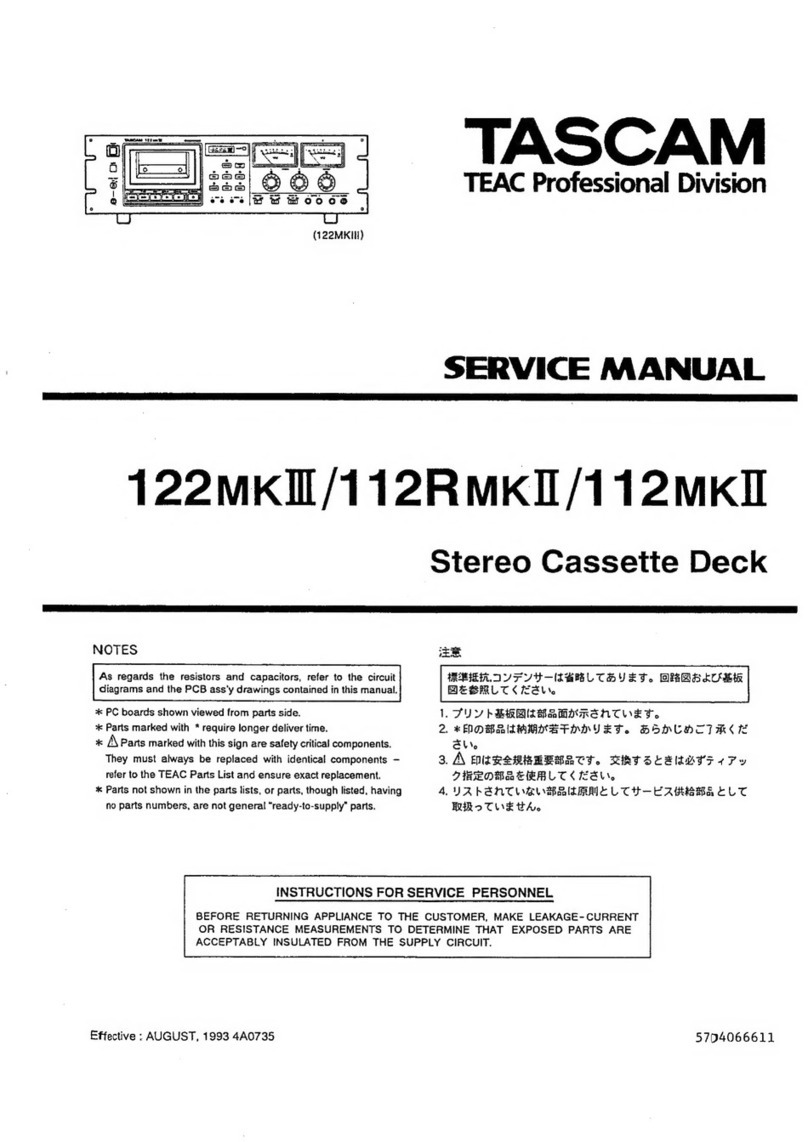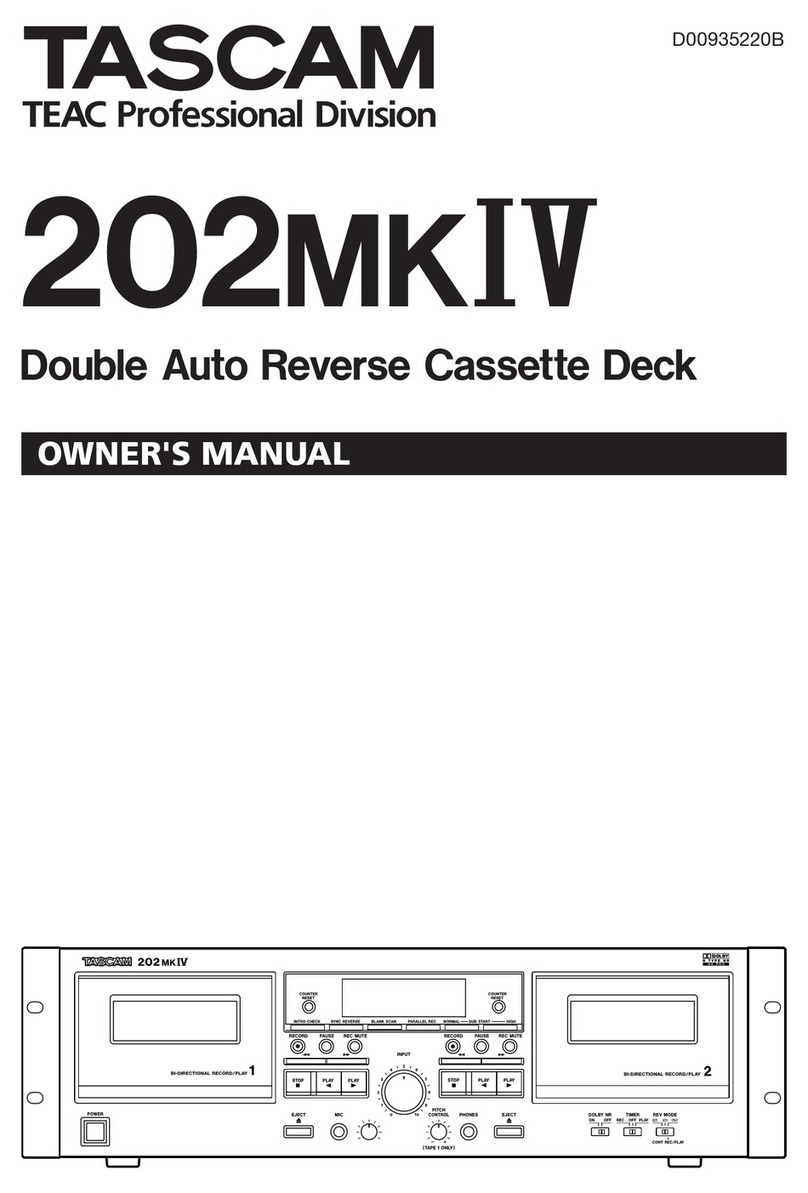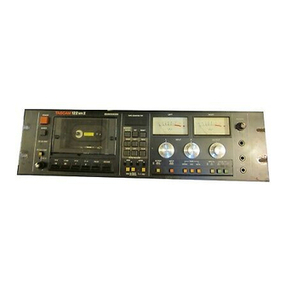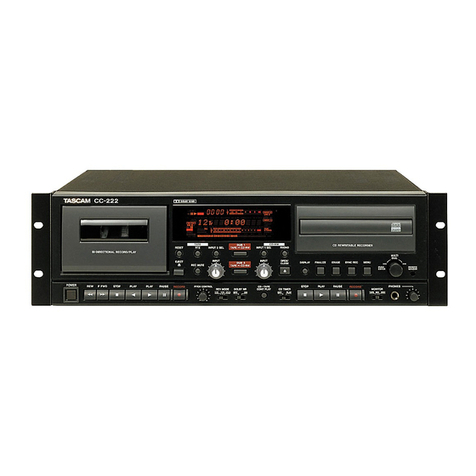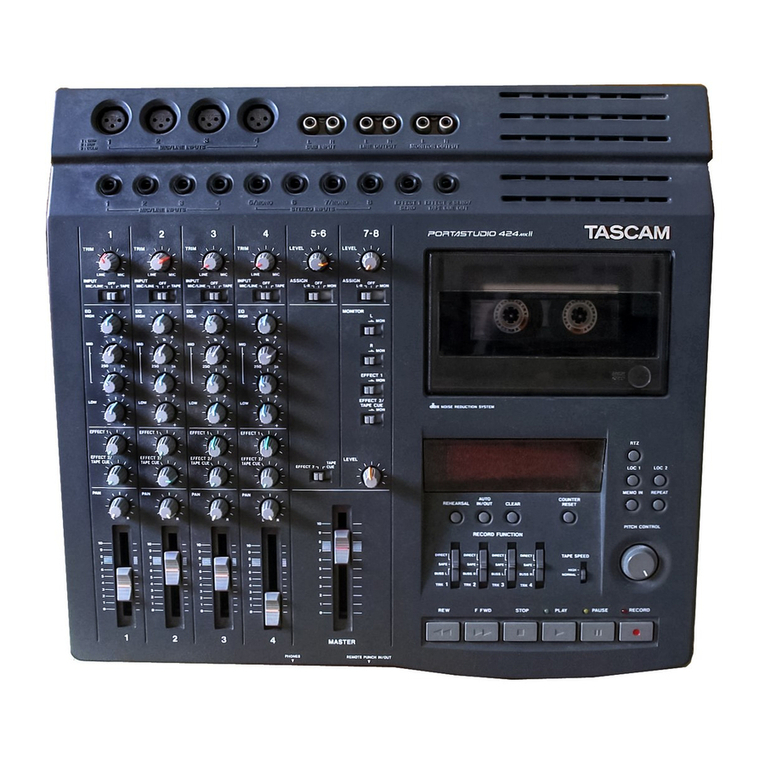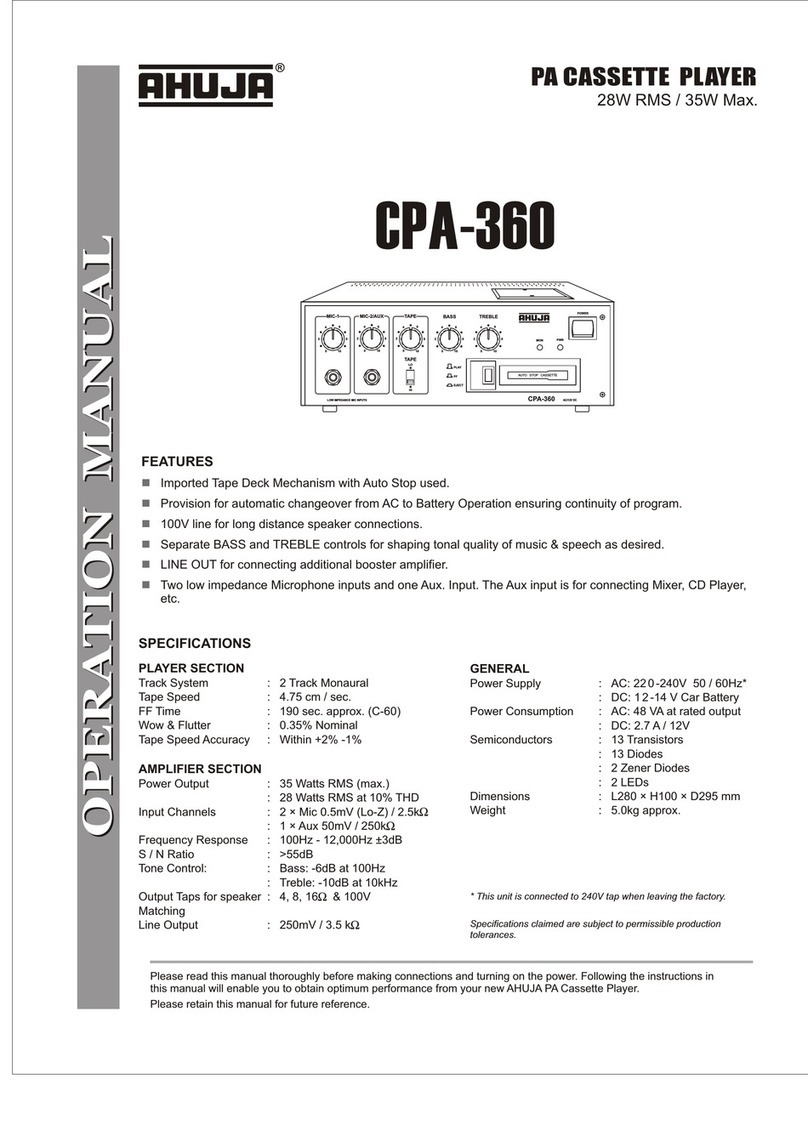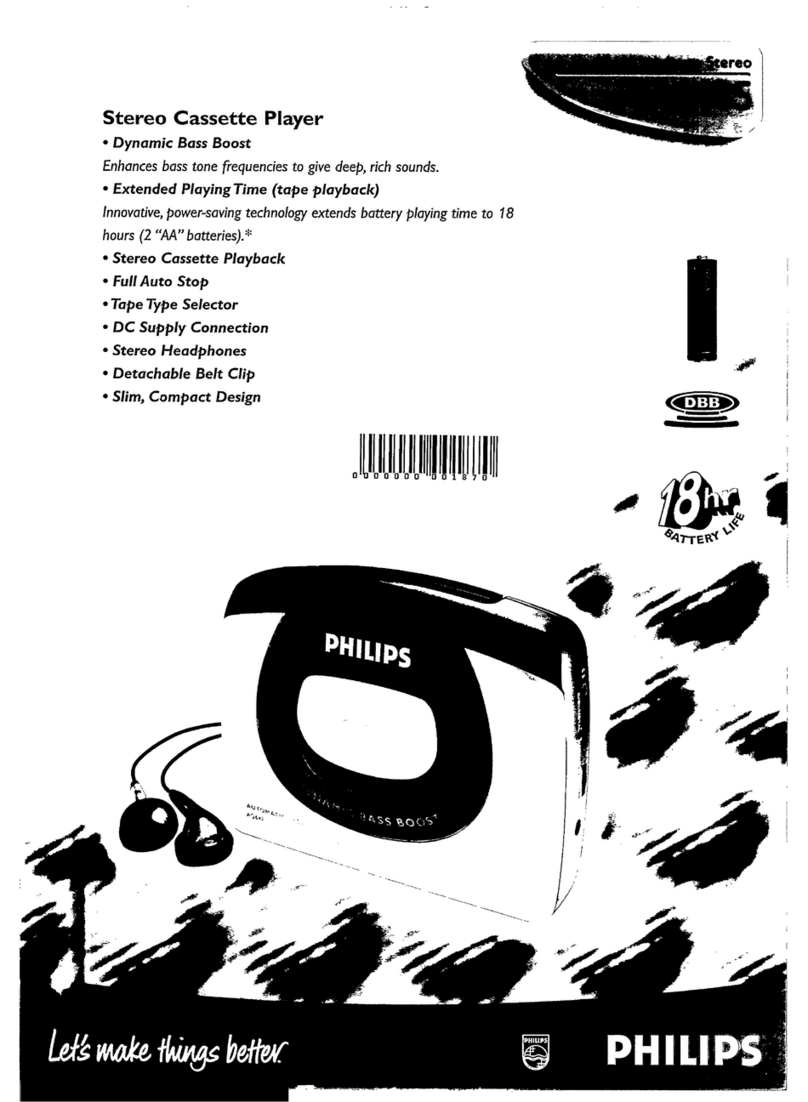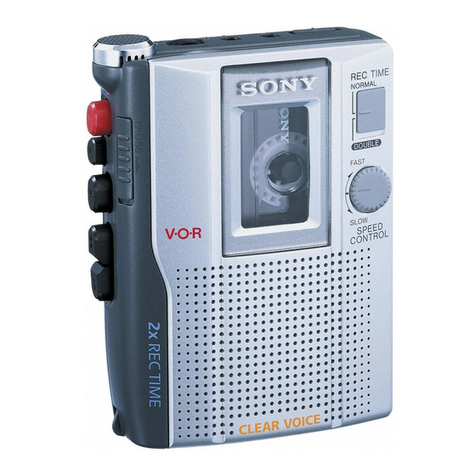1.
POWER:
Switches power on to the unit.
Each time you turn on the deck, the last on/off
status
of the ADJUST switch (122
MKIII
only)
and
Auto
Reverse ( C--.J /
~
) switch (112R
MKII
only)
and
the
last
play/record
direction
as
set
with
the
DIRECTION
switch (112R
MKII
only)
are
retrieved
from
a backup memory.
2.
EJECT:
Opens the cassette compartment.
3.
PITCH CONT : Provides about a plus
or
minus
12
%
variation
to
the tape speed
in
both Play and Record modes.
Unless you use the function intentionally, make sure that
the knob is at its
OFF
position for the tape
nornlal speed (1-7/8 i.p.s.
or
4.8 cm/sec.). to roll at
4.
REW : Winds the tape at high speed
in
r
pressed during Play Pause, enables reverse cueing.
everse.
If
5.
F.FWD : Winds the tape at high speed
in
the forward
direction.
If
pressed during Play Pause, enables the forward
cueing.
6.
STOP : Stops all tape motion.
7.
PLAY:
Starts
playback.
If
pressed
together
with
RECORD, starts recording. If pressed during Record Pause,
resumes recording.
8.
PAUSE:
Temporarily
stops
play
or
recording;
to
resume the function interrupted, press PLAY.
If
pressed
together with
RECORD,
activates Record Ready mode,
allowing you to start recording by pressing PLAY only.
9.
RECORD: Starts recording when pressed together with
PLAY.
10. Tape
Counter:
Displays the distance from a zero
reference point, selected by pressing RESET (-99 M 59 S
to 99 M 59 S with the 122 MKIII and 112R MKlI ;
or
00
00
to 99 99 with the I
12
MKII).
A
type
of
tape
in use
(NORMAL,
Cr02
or
METAL)
is
indicated on the right hand side
of
the tape counter, and the
monitor
source
too-"INPUT"
lights unless tape signal
is
feeding the front PHONES and rear OUTPUT.
NOTE
122
MKIII
and
112R
MKII
: The
tape
counter
is
not a
clock.
Its
reading
depends
on the
tape
length, relative
tape
packs
on both
reels
and
other
mechanical
factors.
Use
a watch to
measure
the correct length
of
particular program.
Discrepancy
between
measurements
on
the
tape
counter
and
a clock (from beginning to end, one-way
run) .
Normal/Cr02
Metal
C-30
+3
min. 00
sec.
to
4
min
. 00
sec.
-
C-46
+1
min.30
sec.
to
2
minA5
sec.
+2
min.OO
sec.to
3 min.15
sec.
C-60
-45
sec
. to +30 sec. o
min.OO
sec
.
to
+1 min.15
sec
.
C-90
-1
min.30
sec.
to
-30
sec.
-1
min.15
sec.
to
omin. 00
sec
.
C·30/46 measurements made with narrow hub cassettes.
11. INPUTS,
Land
R : Allow individual control
of
both
channel levels.
122 MKIII : Both controls are geared together to allow
simultaneous
adjustment
of
the record level
of
both
channels. Each channel
can
be adjusted independently
by
holding
one
knob and turning the other.
12. VU
meters
:
Indicate
input
or
tape signal levels
depending on the transport mode and the MONITOR switch
selling.
13.
MONITOR:
Setting to
INPUT
routes the input
signal
to
the PHONES and
OUTPUT
jacks, whatever the
transport
mode
.
If
set
to
AUTO, the input signal
can
be
monitored in Record Pause (Ready) mode, and the tape
signal while recording (off-tape monitoring)
or
playing.
The VU meters also switch the same way.
The 112 MKII does not provide off-tape monitoring; you']]
hear the input signal instead while recording
is
taking place.
14.
OUTPUT:
Adjusts
the signal level sent to the
OUTPUT
jacks
on
the rear panel.
6
